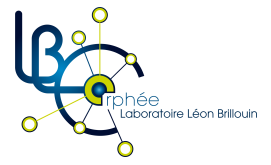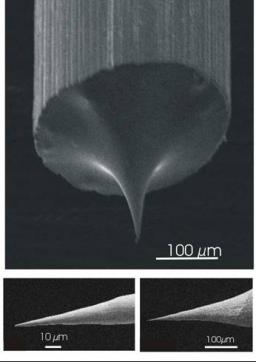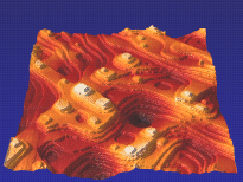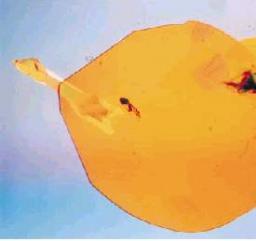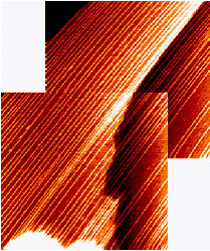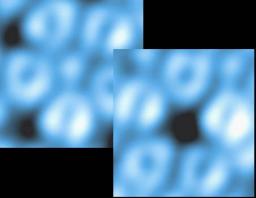Laboratoire Léon Brillouin
UMR12 CEA-CNRS, Bât. 563 CEA Saclay
91191 Gif sur Yvette Cedex, France
+33-169085241 llb-sec@cea.fr
Near field microscopies

Near field microscopies cover a whole of techniques making it possible to visualize the surface of materials at a nanometric scale.
These microscopies gather:
- Scanning Tunneling Microscopy (STM)
- Atomic Force Microscopy (AFM)
- Magnetic Force Microscopy (MFM)
All these techniques have in common the positioning nanometric of a tip on top of the sample whose position is controlled according to the selected signal (current, force).
#490 - Last update : 09/13 2005
More ...
The formation of structural patterns on a nanometric scale is approached using the growth of thin layers. This approach is based on comprehension, until the atomic scale, of the relevant kinetic processes. A judicious exploitation of the energy hierarchy of these mechanisms led, by spontaneous organization of the matter deposited, to the emergence of a periodic arrangement of nanostructures with a specific geometry.
The emergence of the organic semiconductors in the electronics area and the technologies of information is now on a reality. Small molecules or polymers, these materials can be to substitute for silicon in the realization of transistors, photovoltaic cells or electroluminescent diodes. Easy to deposit, mechanically flexible, they are inexpensive. Their structure can be adjusted so as to obtain the desired properties.
The silicon carbide (SiC) is an interesting semiconductor for electronics because of its capacity to be functioned at high temperature. Another interesting property of this materials is the capacity that on its surface under certain conditions to organize itself in formed atomic dimer lines of which the length can exceed the micron. Spacing can be adjusted by a heat treatment. Thus it is possible to realize a super-lattice of atomic lines massively parallel.
The discovery of quasicrystals in 1982 was a revolution in physics solid state. A crystal could have a 5-fold orientational symmetry prohibited by te usual crystallography. In return, its structure is aperiodic. One distinguishes quasicrystals with icosahedral symmetry (aperiodic in N=3 dimensions) and dodecagonal (N=2). The studies by x-rays and neutrons diffraction allows to describe their structure.
